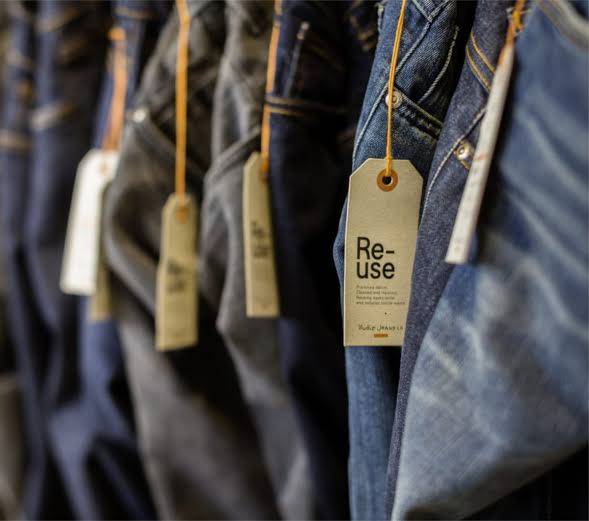Introduction
The fashion industry has long been associated with fast-paced trends and throwaway culture, resulting in significant environmental consequences. However, a new paradigm is emerging—one that aims to redefine fashion by embracing circular economy principles. This article explores the concept of the circular denim economy and how post-consumer recycled yarn is revolutionizing the way we produce and consume denim, paving the way for a more sustainable future.
Understanding the Circular Denim Economy
The circular denim economy represents a shift away from the linear “take-make-dispose” model of fashion. It embodies the principles of reduction, reuse, and recycling, with a focus on extending the lifespan of denim garments and reintegrating them into the production cycle. By closing the loop, the circular denim economy aims to minimize waste, conserve resources, and reduce the environmental impact of denim production.
Post-Consumer Recycled Yarn: A Key Ingredient
At the heart of the circular denim, economy is post-consumer recycled yarn. This innovative material is derived from discarded denim garments, such as jeans and jackets, that would otherwise end up in landfills. Through a rigorous process of shredding, cleaning, and transforming the denim fabric into yarn, post-consumer recycled yarn offers a sustainable alternative to virgin denim.
Environmental Benefits of Post-Consumer Recycled Yarn
The utilization of post-consumer recycled yarn in denim production brings forth significant environmental benefits. Firstly, it reduces the need for raw materials, including water-intensive cotton cultivation and chemical-intensive dyeing processes. By repurposing existing denim garments, the demand for virgin resources is minimized, leading to reduced energy consumption and carbon emissions.
Moreover, post-consumer recycled yarn helps divert textile waste from landfills, addressing the growing problem of textile waste accumulation. By giving new life to discarded denim, we can significantly reduce the environmental footprint associated with garment disposal and promote a more sustainable approach to fashion.
Quality and Performance of Recycled Denim
One common misconception about recycled denim is that it compromises quality and performance. However, advancements in technology and manufacturing techniques have resulted in recycled denim that is on par with virgin denim in terms of durability, comfort, and aesthetic appeal. Through careful sorting and processing, post-consumer recycled yarn can be transformed into high-quality denim fabrics that meet the demands of both designers and consumers.
Collaboration for a Circular Future
The transition towards a circular denim economy requires collaboration and commitment from all stakeholders within the fashion industry. Designers, manufacturers, consumers, and policymakers must work together to develop and implement strategies that support the adoption of post-consumer recycled yarn and other circular practices. By fostering partnerships and sharing knowledge, we can create a supportive ecosystem that drives innovation and propels the industry toward a more sustainable future.
Consumer Engagement and Awareness
Central to the success of the circular denim economy is consumer engagement and awareness. As conscious consumers, we have the power to drive demand for sustainably produced denim products. By actively seeking out brands that embrace post-consumer recycled yarn and making informed purchasing decisions, we can support the growth of the circular denim economy and encourage others to do the same.
The Economic Potential of the Circular Denim Economy
While the circular denim economy is primarily driven by environmental considerations, it also presents significant economic opportunities. As the demand for sustainably produced denim grows, there is potential for job creation, innovation, and the development of new markets. By embracing circular practices, brands can differentiate themselves in a crowded market and attract consumers who value sustainability and ethical production.
Conclusion
The circular denim economy, fueled by post-consumer recycled yarn, is redefining the fashion industry’s approach to denim production and consumption. By closing the loop and embracing circular economy principles, we can minimize waste, conserve resources, and reduce the environmental impact of denim. Post-consumer recycled yarn plays a crucial role in this transformation, offering a sustainable alternative to virgin denim while maintaining the quality and performance expected by consumers.





























